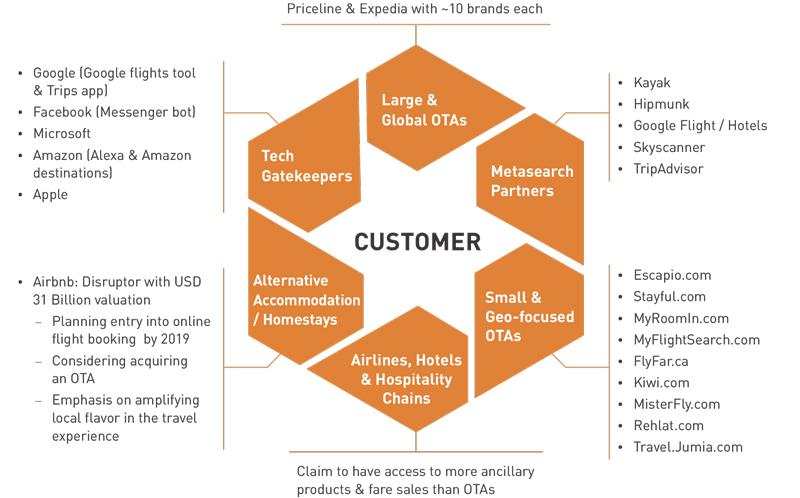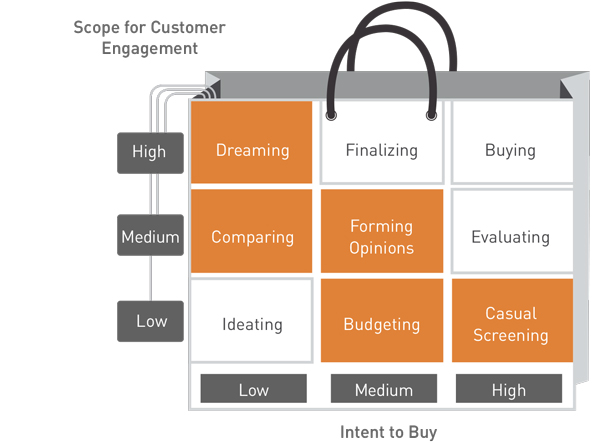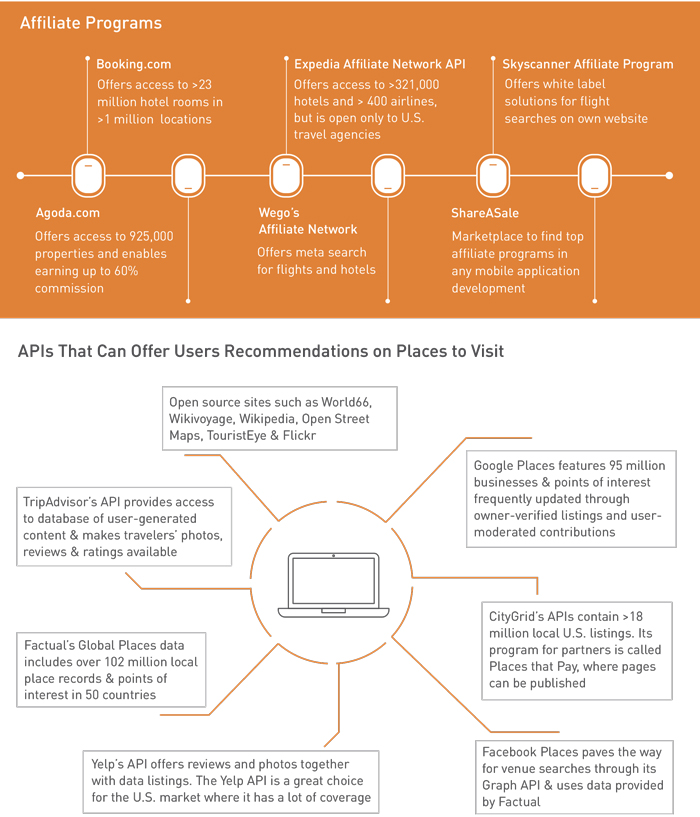The travel industry has witnessed many disruptions in the past decade with digitization playing the role of a key disruptor. Consumers increasingly prefer prioritizing travel over other life events and turn to their digital devices to book everything from airline tickets to tours to hotel rooms and associated holiday packages.1 Whether they opt to do so directly or through aggregators and Online Travel Agencies (OTAs), the primary experience they are looking for is ease of use, cost benefits and convenience.
Consequently, the online travel market has become a highly fragmented space. Dominated by few large players with tech power and countless small ones, hyper-competition is leading to the erosion of margins for both service providers and their hospitality partners. Amidst this brewing tension, online marketplaces such as Airbnb are adding another layer of complexity through a new level of disruption. Enabling people to easily scout for and book accommodation in apartments, homestays and hostels over an extremely user-friendly app, Airbnb has tightened the competitive space even more.
The flux is not limited to leisure travel alone. In a survey by Tnooz, a news and analysis firm focused on travel, nearly 20 percent of respondents admitted to using peer-to-peer websites for business travel. For leisure travel, the corresponding percentage was as high as 50 percent.
While this may or may not point to a future trend, OTAs do seem to agree that travel deals, and cheaper and safer accommodations score over airline or hotel brand preference for most customers. According to Expedia, less than two percent of their loyal customers search for a particular hotel brand when performing a hotel search. It is obvious that new-age travelers are spoilt for choice. They seek more value through higher discounts and rely largely on peer reviews, while demanding highly personalized and seamless experiences at the same time.
However, in order to provision such tailored services to each customer, it is important to have a 360-degree view of the customer. It is also highly critical to build intuitive apps and interfaces that can facilitate complex searches to help customers arrive at an optimal itinerary. This is exactly the sweet spot that most large OTAs are trying to hit with the aid of advanced technologies such as Artificial Intelligence (AI), chat bots and virtual travel agents while this is still a grey area for the small OTAs. With scarce funds and minimal resources to invest in new technology and mounting pressure to lower margins from hotels, small OTAs have their work cut out if they hope to sustain their market share in the near future.
 The Consolidation Game
The Consolidation Game
A quick look at the online travel space reveals other challenges as well including the entry of technology giants with some heavy investments. Figure 1 shows a brief snapshot of the key players in the travel marketplace and points to the emerging consolidation in the industry as large OTAs snap up small ones to obtain niche competencies.
Figure 1: Travel Consolidation Snapshot

For example, Priceline has grown by acquiring Booking.com and Kayak and has a major presence in Europe and Asia-Pacific.2 Similarly, other major players have been on a shopping spree acquiring companies and consolidating their position. Additionally, there are a large number of new ecosystem partners such as metasearch providers that enable multi-city-destination searches and monthly views that make it easier for travelers to find and book their optimal itineraries.
Hence, small OTAs will need to work harder to position themselves as competitive and able players. They can take a leaf out of the playbook employed by hotels which continue to push for direct bookings to circumvent the perceived high OTA commissions in spite of the mounting stack of evidence that work in favor of the OTA model.3
Let us explore some ways in which small OTAs can find their sweet spot.
 Leveraging Data for Personalization
Leveraging Data for Personalization
A key reason for the success of large OTAs, besides the obvious advantage of large transaction volumes and customer bases, is their ability to leverage data to gain business insights, and offer value-added services. For example, when a customer books an airline ticket through a large OTA, the platform will recommend booking on certain dates for discounted prices, or suggest a hotel for the destination being booked. Besides providing useful recommendations, large OTAs also incentivize repeat business by offering customers targeted promotions based on past behavior.
Small OTAs have lessons to learn here. While they have their own customer data, they often fail to leverage the information to maximize customer experience. Small OTAs often know their customers, typically a loyal set of repeat users, personally. These relationships can be further strengthened by harnessing analytics tools to deliver highly customized services. While these strategies are bound to require some upfront investment in technology, such initiatives are likely to deliver in the long run.
 Influencing Customers
Influencing Customers
It also pays to know when exactly customers are receptive to engagement during the course of planning their trips. Interactions can be successfully initiated and relationships nurtured for most customers, if not all, even when their intent to buy is low. The secret to engaging with customers is to catch their attention early when they are actively looking to buy.
In Figure 2, the scope for customer engagement is mapped against customers’ intent to buy across the various stages of the travel buying cycle. The cycle begins with dreaming and culminates in buying with intermediate stages such as comparing, forming opinions and budgeting. As seen in the figure, opportunities to influence the customers are highest in the initial stages of the buying cycle (the five colored stages). As customers move towards the final stages of the cycle, they have more or less made a choice. Hence, trying to influence them in the latter stages often becomes an uphill task.
Figure 2: The Influence Matrix

Nevertheless, OTAs should leverage available technologies to target customers at every stage in the buying cycle. Small OTAs can do this by effectively harnessing emerging technology tools. For example, they can adopt cloud-based hotel management systems that handle the entire value chain from reservations to billing.
They can also connect with airline Application Programming Interfaces (APIs) that allow customers to look up flights and add-ons from multiple carriers using an intuitive interface. When customers use APIs to specify their preferences for flights and ancillary services, the total cost shows up in the search results and aids in buying decisions.
Small players can also leverage affiliate programs and APIs, as seen in Figure 3, to enhance client personalization:
Figure 3: Improving Client Personalization

Small OTAs can leverage other technologies such as blockchain, gamification and Augmented Reality (AR) to their advantage as well. Companies can use blockchain-based platforms to sell their products at lower distribution costs than the traditional Global Distribution Systems. Customers can use tokens to buy these products in the blockchain-led marketplace. Gamification is another immersive way to enrich travelers’ experiences. Similarly, AR can create memorable experiences by combining the physical and virtual worlds.
Exploring effective customer engagement methodologies can be another key to future success. With technology making it effortless, these initiatives can help small OTAs pit themselves against the large players with confidence.
Here’s a list of eight critical customer experience-related initiatives which are easy to implement and also promise a faster return on investment:
- Launch metasearch businesses which are relatively cheaper to roll out.
- Going mobile with travel apps and adopting a responsive design to enhance customer satisfaction.
- Implement service bots on websites and adopt AI-based voice search for curated customer experiences.
- Build in-house Structural Equation Modeling or a fully automatic keyword management system to gain relevant insights.
- Maximize advertising potential with tools to enable dynamic pricing, destination names and ad extensions.
- Forest machine-learning algorithms to calculate the most profitable bid for every keyword.
- Effective social media management via all available social media channels.
- Integration with digital wallets such as Apple Pay, Google Pay and PayPal.
The OTA business model does favor companies that have economies of scale and global reach. As a result, competing on price and advertising objectives with global OTAs is unlikely to be effective for small players. However, small OTAs can flourish by harnessing emerging technologies and partnerships to offer highly personalized services to their loyal customers.